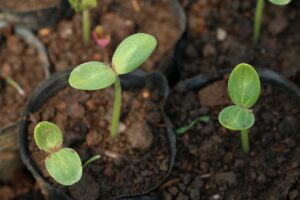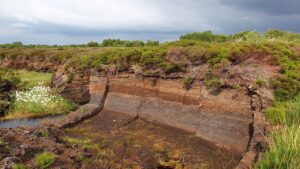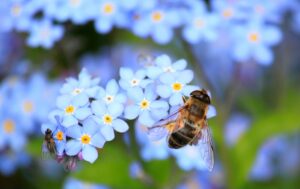Mathematical & statistical approaches to understanding soil, biodiversity and ecological networks with Associate Professor Tancredi Caruso, UCD School of Biology and Environmental Science.

Associate Professor Tancredi Caruso
UCD School of Biology and Environmental Science
UCD Profile
Q. You work on soil biodiversity. What interests you in this topic?
A. When I was a young student I wanted to study systems that were very biologically diverse but also easy to work with. Initially I wanted to do marine biology but I found it very complicated to do community ecology in the sea. And I wanted to work on even more diverse systems. I discovered that soil would be a nice system to work with simply because in a handful of soil you have so many different species, and very different types of organisms.
The types of organisms that live in soil are very diverse and that’s because soil is a semi aquatic environment. In fully terrestrial systems, apart from microbes and plants, there are mostly 3 major groups of animals: vertebrates, arthropods and snails and their kin like slugs. All other major groups of animals live in aquatic or semi aquatic systems. In soil you have many other animal phyla, such as nematodes and rotifers that need a water film. You also have enormous diversity of all the microbes, including protists like amoebas and paramecia. Diversity is not just at the species level but at all taxonomic levels.
This was the original motivation I had to study soil, because I was interested in the community ecology of species rich systems, and how very different and numerous living things come together to form communities. The other side of that is that all this biodiversity seems essential for how terrestrial ecosystems work. But it was really the striking biodiversity of soil that got me interested in the first places, beyond the functions of this diversity. That all these species and biodiversity can come together in such a small amount of space, literally a handful of soil.
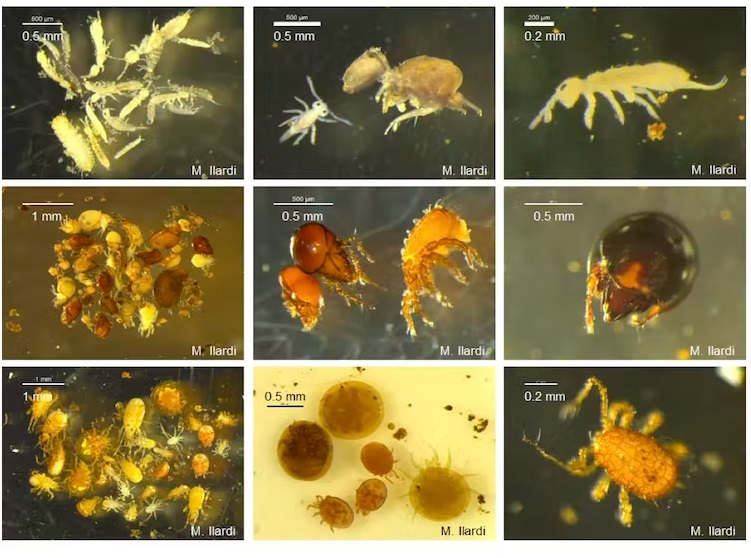
“But it was really the striking biodiversity of soil that got me interested in the first places, beyond the functions of this diversity. That all these species and biodiversity can come together in such a small amount of space, literally a handful of soil.”
Q. Do different habitats have very different soils and organisms?
A. If you look at a single spot of soil, it’s biologically very diverse, but also, as you move from place to place, even continent to continent, there’s variation and so even more biodiversity. The different types of organisms that you find are generally very similar at a high level. You will always find bacteria, fungi, nematodes, protists, etc. Instead, at lower levels, species for example, you will find important differences even from apparently similar habitats, and it’s unclear to this day how this diversity actually affects the way the system works, or how much of the diversity is really needed, and the reasons why soil is so biologically diverse, and whether this diversity has a consequence in terms of the functions, or rather ecosystem functions are more about having some key players, regardless of their specific identity. All these questions are still at most only very partially solved.
“We’re starting to lose soil at an incredible rate because of industrialisation and intensive agriculture. We have already lost a lot of soil. The problem is it takes centuries or even millennia for a few millimetres or centimetres of soil to develop, depending on where you are, but it’s very quick to lose it.”
Q. We hear a lot about there being a soil crisis and soil research is a priority for research funding nationally and in Europe. Why has this interest come about in the last few years?
A. It’s true that governments all around the world are now paying attention to soil. Obviously we need soil to grow food and have clean water. We also need soil to build things. When you do a big building, it’s not just about the bedrock. It’s also about the soil itself which is on top of the bedrock. And it’s very thin, the layer of soil. We’re starting to lose soil at an incredible rate because of industrialisation and intensive agriculture. We have already lost a lot of soil. The problem is it takes centuries or even millennia for a few millimetres or centimetres of soil to develop, depending on where you are, but it’s very quick to lose it.
In a tropical forest for example, if you cut the trees, the soil layer tends to be very thin and the ground quickly becomes like concrete. It’s a phenomenon called laterization, where the ground becomes hard, especially if you have very clay soils. Reforming soil after you lose it is very difficult. Governments are realising that. That’s why there’s so much funding put into soil, also at EU level, and nationally. Almost all countries in Europe have had some programmes focused on soil.
There is a recognition of the key role soil plays. It’s not just about production of food or clean water, it’s also about the climate challenge – one of the roles that soil plays is storing organic matter, so it’s pretty important in terms of emissions. Emissions are not just from the agricultural system, for example cattle and methane. There are actually emissions from the soil itself. The soil breathes. CO2 and other greenhouse gases come out from the soil all the time. Organic matter can go into the soil and can be stored in the soil. Our long-term solution to the issue of emissions of greenhouse gases is not just cutting the emissions, which of course we have to do, but it’s also making sure that we can sequester carbon into environmental compartments. The biggest one is the oceans but the second biggest is the soil.
Peatlands are a very good example of how you can change loss versus gain of carbon in soil. If you have dry peatland you start to have loss of carbon simply because there’s more oxygen, and then the biota in the soil can consume organic matter aerobically. If you have dry peatland emissions and erosion are happening more quickly . If you have a wet peatland, with a high-water table, oxygen is not around and the consumption of the organic matter by the microbes slows down. That’s a very good example and very relevant to Ireland. Soil is very important as is how we manage soil. Whether peatlands are dry or wet very much depends on our choices.
Q. Do you think there’s a better scientific understanding of the role of soil now?
A. Yes. Although even within science, especially global biogeochemical models of carbon, soil has been treated in a very simplified manner until very recent times. In most models, soils were always treated like a black box. Now there is a big effort by those who do carbon modelling to create a better description of the multiple roles that soil plays in the carbon cycle. It’s not just about carbon. Soil is also central to the nitrogen cycle. N emissions are dangerous, especially in the form of nitrous oxide, that is one of the most potent greenhouse gases. Quantitatively there is a lot of CO2 in the emission but methane and nitrous oxide are actually much more potent, and we need to manage them as well.
“You need to concentrate on the key factors, the key processes that are possible to manage. The only way to figure out those key drivers is actually using models that simplify the complexity of the nitty gritty descriptions of every single thing that is living in the system.”
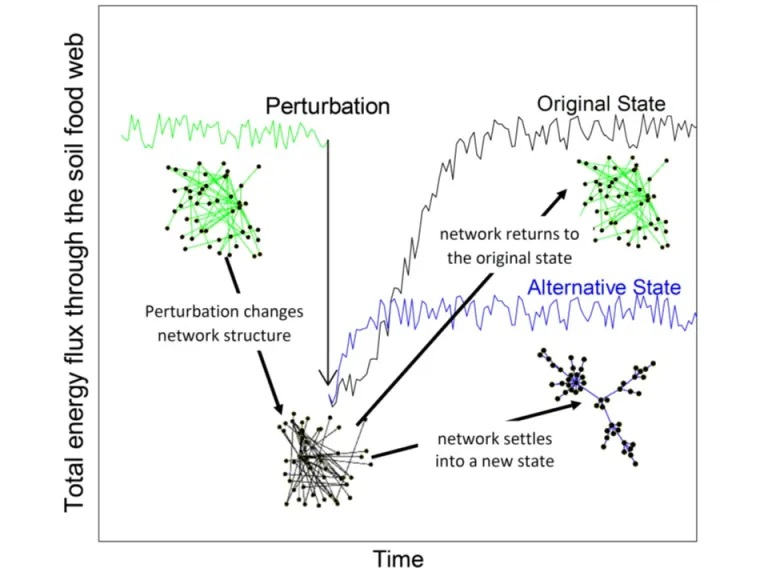
Q. You study environmental biology as well as using mathematics and statistics. Tell us how you came to combine these two approaches
A. My background is as an experimental biologist and ecologist, but when you work on community ecology or ecosystem level ecology it’s unavoidable to start using mathematical and statistical models. The reason is that ecological systems are very complex and we need to use quantitative and sometimes heavily mathematical models to digest that complexity. Although people who don’t do these models may see them as complex, in fact the job of the model is making things simpler! For instance, if you have a food web with many different species and interactions, it’s hard to understand the consequences of all those interactions without a model.
Since I was a PhD student I started using mathematical modelling for ecological systems, as well as statistical models. You need models to describe the most important factors and processes that are driving the system. It is also important for applications from the research, especially those applications that have to be implemented by farmers, landowners and so on. You need to concentrate on the key factors, the key processes that are possible to manage. The only way to figure out those key drivers is actually using models that simplify the complexity of the nitty gritty descriptions of every single thing that is living in the system.
For example, when we study ecosystems we need to take very many measurements, and collect a huge amount of data. When I say “measurements”, I mean anything from describing the abundance of a single species of animal in the soil to measuring emissions from the soil. All of those things need to come together to understand key processes such as the cycling of elements. For instance carbon or nitrogen cycling or the relationship between biodiversity and ecosystem level functions. This is where the interdisciplinarity of my research comes. It’s about integrating those experimental measurements that describe the system with models that connect all those measurements to get a meaningful description of the system.
Q. You have a number of ongoing projects – one funded by SFI called ‘Delivering food security from grasslands by understanding the link between root microbial networks and resilient agriculture’ and another EJP project called SoilHeal. Tell us about these projects and what links them
A. Both projects look at grasslands, in particular productive grasslands, that is grasslands used for some form of food production, whether grass for cattle or silage. It could be any kind of managed grasslands ranging from very intensively managed ones, where the farmer for example aims to get abundant and nutritious ryegrass for the cows to eat, which requires frequent reseeding and constant input of fertilisers, to semi natural grasslands. Nowadays almost all farms have a combination of these kinds of fields, for many reasons, including subsidies to increase the naturality of the landscape.
The other thing the two projects share is that we are looking into interactions between plants and microbes and the networks that plants form with microbes. When I say networks I mean that at multiple levels. One type of networks they form is for instance in grasslands when you have multiple plant species and each of those plant species interact with any number and types of microbes and you can then assemble these interactions into a network linking plants to microbes.
It’s more or less like plant pollinator networks, where on one layer you have the pollinator species, and on the other layer you have the plant species. Likewise in grasslands you can do the same but instead of having pollinators you have the microbes. Pollinators are usually described at the species level, with microbes that’s a bit more complicated. You have many different types of microbes that are associated with different plants in grasslands, and even the most intensely managed grassland have some plant and microbial diversity in it.
We’re also looking at disturbances in the system. In particular in the SFI grant we’re looking at the combined aspects of extreme drought and flooding, which year by year we witness more and more. So you may have a spell of extreme drought, in times when you don’t expect it, and then have extreme precipitation events. At that point precipitation becomes problematic because after a severe spell of drought the soil tends to seal, which means when you have a lot of water in a very short space of time on the ground, the water runs off. We are looking at how this combination of extreme events affects those plant soil networks, and the effects impact ecosystem functions.
Our hypothesis is that the ability of all grassland to resist or recover from the impact of those combined extreme drought and flood depends on those plant microbe networks. Therefore we are looking for changes in the structure of those networks that can signal a more or less stable system, or even associations of plant and microbes that might be more resistant or more resilient to those combined effects.
In the SFI project we are looking at all microbes, bacteria and fungi especially, in plant roots. In the other project we specifically focus on arbuscular mycorrhizal fungi, which is a group of fungi very important to plants. More than 90% of flowering plants have a symbiosis with these fungi in their roots. These fungi are important because they allow plants to better access soil nutrients, especially phosphorus. They also give plants other benefits. It’s been demonstrated that arbuscular mycorrhizal fungi, also known as AMF, protect plants from pathogens and pests. For example, they protect plant roots from nematodes that feed on plant roots. In the SoilHeal project we more specifically target this group of fungi, which is known to be very beneficial to plants, especially in grasslands.
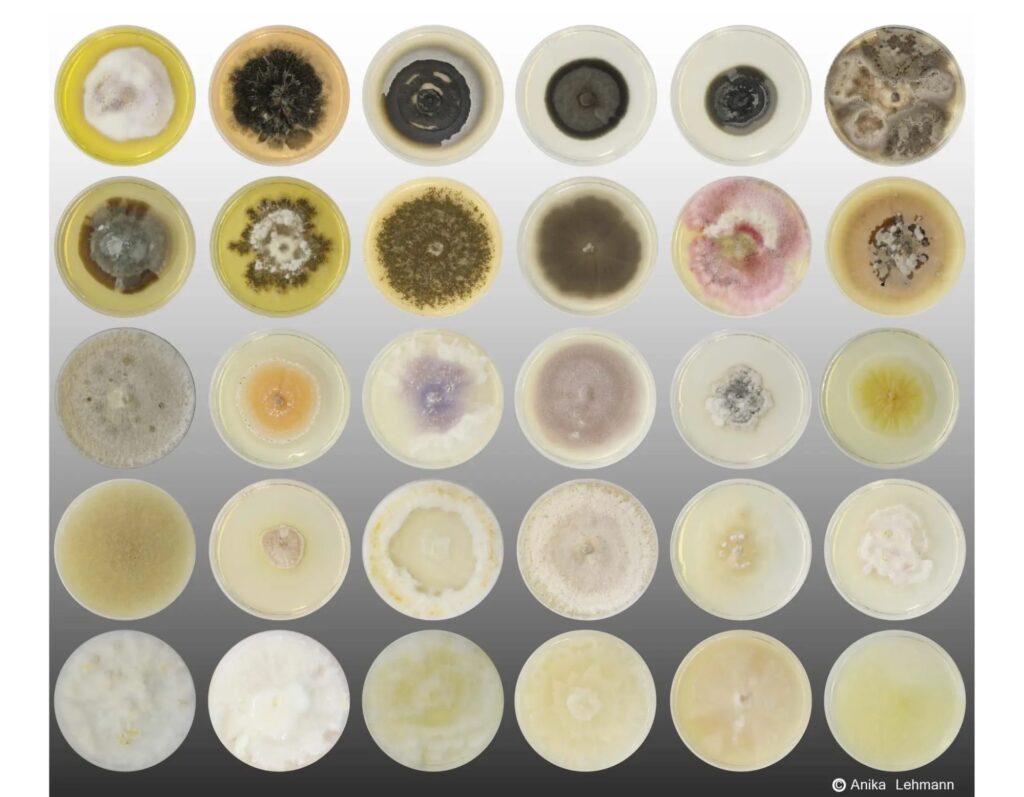
“Microbes are by far the most important [organisms], in terms of the composition of organic matter and sequestration of carbon. These go hand in hand. They are also important in terms of the interactions they establish with plants.”
Q. Which species or organisms are really crucial to soil health and its role in agriculture and greenhouse gas cycling?
A. There are very many species living in the soil, and they belong to very many different types of organisms. If you take just the fungi or bacteria and you look into the diversity of just those groups, it’s enormous. You can have very many species, genera, families, orders, and even phyla, in the soil. If we speak at the species level or below, though, it’s going to be very hard to point to individual species that might be particularly important. In general, what you see is that certain higher level taxa (say above the genus level) tend to be everywhere in soil, but will be represented in different soils by particular species or even local populations of species. So I can’t point to a single species.
But if you go at a higher level, then you can definitely say who are the key players. They are all important but microbes are by far the most important, in terms of the composition of organic matter and sequestration of carbon. These go hand in hand. They are also important in terms of the interactions they establish with plants. When I say microbes I mostly mean bacteria and fungi and their relative roles. These are the most abundant, the most diverse, and biochemically speaking also the most capable in terms of decomposing basically any kind of organic matter, more or less slowly depending on the type of organic matter and organic compounds but basically anything, especially fungi. Today when you say microbes you might also mean things like protists (amoeba, paramecia and their kin). The definition of microbes is really based on the size, it’s not like a taxonomic definition.
Microbes like bacteria and fungi produce biomolecules, but also simply their biomass, within which they store carbon and many other elements. These organisms are essential for how nutrients flow and cycle in the soil system. They provide nutrients for plants in the soil. It’s not just about how they feed on the organic matter in the soil and what they produce. They form physical networks in the soil that hold the soil together. The role of microbes is also in terms of interaction they have with plants. For example there is chemical warfare happening in the soil between microbes, and between plants and microbes, because many microbes can actually be pathogens to plants. There are lots of biochemical interactions that regulate these negative interactions between microbes.
Ecogical network modelling image from Re-EcoNet website.
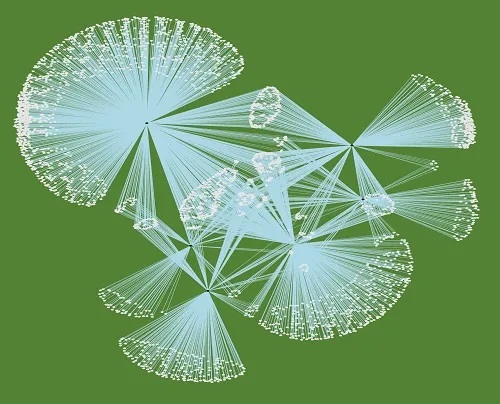
Q. Tell us about the Re-EcoNet project which was one of the Earth Institute Strategic Priority projects a few years back.
A. With Re-EcoNet the idea was to get a bunch of people who are interested in ecological networks from different points of view. Some of us collect many data to assemble them, because of the nature of things we measure in the field. For example Dara Stanley works with plant and pollinators networks, There is Matthias C. Rillig who has data about how AMF is associated with different species of plants. I do food webs but also plant microbial networks. We also have people like Diego Garlaschelli who is not really specifically interested in these kinds of networks, but more generally interested in network models as applied to any type of data, from finance to food webs.
The idea was there are very many different methods of network analysis that are not very well known but could be of great interest to ecologists. Some of those methods are very intriguing and important because they specifically focus on the relationships between the structure of the network and how the single network or multiple networks can respond to shocks and disturbances. So that was very interesting to me, because my classical type of research used to look at ecological communities and perturbations, and ask what are the changes you can observe in the community following a shock. If you can describe a community as a network then you have a whole range of new methods that you can use to better understand how shocks propagates through the network.
That was the origin of Re-EcoNet: to integrate general methods of network science into the practice of analysing ecological networks. We try to digest the complexity with these methods. This is very important for ecologists because traditionally we want to describe and name and count everything. We have this massive amount of data, and it takes a lot of time to collect this data. Could we measure less but better? Could we collapse diversity and complexity into simple but not simplistic forms, and if we do that, do we miss something that could be vital in terms of how a network responds to a shock, for example whether the network collapses or reassembles in response to shocks?
This is where the ideas we have been exploring with Re-ECoNet have been important – with the SFI Grant, the key ideas in terms of the methods of analysis came from Re-EcoNet. Some of the methods were already well established but every time you apply an established method to a new system it makes people think differently, new perspectives emerge. That was the key role of Re-EcoNet.
Q. Tell us about your interest in community ecology in particular as a scientific approach
A. When I started in my career, my key question was the classic community ecology question. How is it possible that so many species come together into very small amount of soil when in that soil there aren’t apparently very many different types of food or environment to support this diversity? Competition should be extremely fierce for all these different species. There must be processes at work that allow coexistence between all these species, if anything simply because many of these organisms look so similar. So where are we going wrong with our basic theory? Is it because some of that diversity is actually not important? Or is it because there are hidden processes that we can’t see? That was my original question.
Slowly, though, I started investigating how these very many species interact and how much of these apparent associations between species may just be random. So, how some of these associations are actually just ephemeral things you observe occasionally. Also, how many of those interactions are essential to the system? Again it comes back to this trade-off between the complexity of the system and our need to have a simple view of the system yet giving us the most important aspects.
I think this is basically what science is about. It’s about understanding the essential aspects of nature. We recognise and celebrate the complexity and diversity of nature and this is actually what attracts many biologists to their field of research. We like nature because it’s diverse and complex, and that complexity is beautiful, enjoyable. But when it comes to the practice of science it’s also something you want to crunch and digest into something more simple and manageable to work with, so that you can offer other people a vision of nature. What are the fundamental principles, what are the key processes?
That’s why I work a lot at the interface between experimental work and theory. In terms of background I would mostly describe myself as an experimentalist. In terms of my career and activity it’s really in between theory and experiments, and the interface between the two. That’s where you have a higher chance to simplify that complexity and help understand the system a bit better. And there’s always this applied element as well, for example, with soil, working with farmers.
The applied aspect is where we really need to understand the complexity of ecological systems in a manner that will single out the most important factors and processes. Because those are the ones we can work on, to drive the system. For instance, nitrogen cycling. There are many different types of microbes, that affect the nitrogen cycle and nitrogen also has many different chemical forms. The nitrogen cycle is a nightmare to study! Since I was s student and until today, when I teach it…it’s still so complicated! Complicated at a chemical level, because of the different forms of N. And at the biological level, because there are so many microbes involved in it, including how these microbes interact with plants.
We need to know who are the key players, what are the key steps, and where can we intervene in the cycle to make sure we have enough nitrogen in the soil and that it’s not leaking in to the water or even the air. That’s a perfect example of something that is very complex, the cycling of an element, and where we need to look at the key parts of the cycle to manage the process in a manner that is compatible with what we need in the future.
